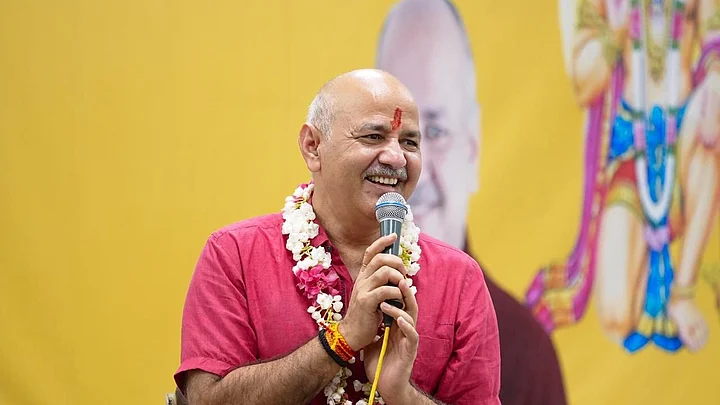Justice BR Gavai, in one week, has been part of three cases that show the state of institutional decay in the judiciary.
In Tusharbhai R Shah v State of Gujarat, the Supreme Court noted the casual disdain with which the police and the jurisdictional magistrate ignored the order of the apex court granting anticipatory bail to the accused.
Not only that, the police kept the accused in custody longer than permitted and the Magistrate brushed aside the complaints of torture in police custody made by the accused. Holding the police officer and magistrate guilty of contempt was the right thing to do.
Later in In Re: Order of Punjab and Haryana High Court dated 17.07.2024 and Ancillary Issues, the Supreme Court took exception to the unwarranted remarks of a single-judge bench of the Punjab and Haryana High Court made against it. The Supreme Court’s stay order was discarded by the single judge who proceeded to make oral observations against the court and put them down on record. A bench of five judges of the Supreme Court has promptly expunged his remarks from the record.
And thirdly, Justice Gavai, with Justice KV Viswanathan, granted bail to Manish Sisodia in the so-called liquor policy scam on the ground that the trial had not even begun in the matter and would not end anytime soon.
Notable here was the frustration of the court with trial courts and the High Court playing it “safe” on matters of bail (by simply refusing them) and adding to the Supreme Court’s burden.
What connects these three disparate cases beyond the fact that Justice Gavai was in some way involved with them?
It may be just coincidence but I believe that the first two cases I’ve referred to give us a hint about the Supreme Court's frustration with trial courts and High Courts casually denying bail.
What the Tusharbhai Shah and In re Punjab and Haryana HC cases reveal are instances of wider breakdown of judicial discipline. Even though Articles 141, 142 and 145 of the Constitution require all courts to not just follow the law laid down by the Supreme Court but also act on the court’s orders, we see instead a casual disregard of such orders by courts lower in the hierarchy. It is not surprising that the lower courts also ignore the Supreme Court’s “bail is the rule and jail the exception” principle.
The word of the Supreme Court no longer seems to carry the weight that it ought to and this should trouble us all.
But how did this come to pass?
A major institutional reform introduced in the Constitution was to unify India’s judiciary into a single hierarchy and insulate it from executive interference. This was fortified later when, through judicial interpretation, the High Courts were given exclusive control over the appointment and removal of trial court judges and the Supreme Court was given the final say in the appointment of judges in the High Court and Supreme Court.
The idea was to ensure that executive pressure would not interfere with judicial functioning. Whether the collegium system is the best way to ensure independence is a different matter but it is the law as it stands today. Or it was supposed to be if it hadn’t been stealthily replaced by the “search and selection system” where the final say on the appointment of judges rests with the Union Government.
As I’ve written elsewhere, this change is not because it was mandated by the law but because the Union government was allowed to ignore the Supreme Court’s judgments and give itself the power to have the final say on judicial appointments. Even efforts to get the court to take notice of this wilful disobedience of the court’s judgements have stalled - thanks to the court itself.
This has meant that independent-minded lawyers do not enter the judiciary and only those deemed “acceptable” by the Union government do so. Even the collegium’s multiple re-iterations of a nominee are ignored by the Union government.
Judges are humans, not robots. They act in accordance with the incentives placed before them by the institution. When judges feel that they owe their position to the Union government and not to the judiciary, they act accordingly. When trial court judges are being assessed by High Court judges who believe their duty is to keep the Union government happy, they do the same.
There may be the rare hero judge who disregards their own career prospects to do the right thing, but institutions and systems cannot rely on heroes to survive. Institutional independence takes a hit.
A second, longer-term consequence has been the loss of the Supreme Court’s authority within the judiciary even in judicial matters. If the Supreme Court doesn’t respect its own judgments enough to assert itself, other courts will take their cue accordingly. Playing it “safe” is consequence-free for judges.
There was no reason to deny Manish Sisodia bail in the first place. Having granted it now (several months late), the Supreme Court has, at least now, woken up to the systemic consequences of its actions. The court should now act, not just in being more liberal in its grant of bail but in asserting its constitutional authority as the apex judicial body.
All the admonitions and contempt of court actions will have little effect if the court does not show it takes its own orders seriously. After all, as Game of Thrones’ Tywin Lannister said, “Any man who has to say ‘I am the King’, is no true King.”
(Alok Prasanna Kumar is a Senior Resident Fellow at the Vidhi Centre for Legal Policy in Bengaluru. He is also a member of the Executive Committee of the Campaign for Judicial Accountability and Reforms. This is an opinion piece, and the views expressed are the author’s own. The Quint neither endorses nor is responsible for them.)
(At The Quint, we question everything. Play an active role in shaping our journalism by becoming a member today.)
